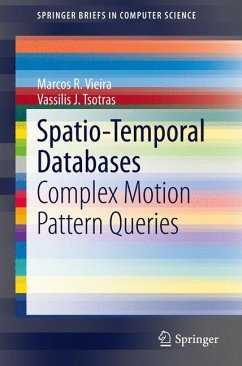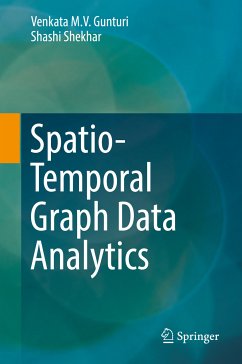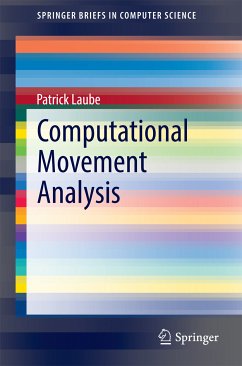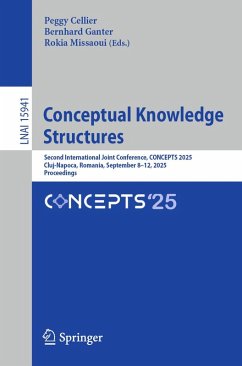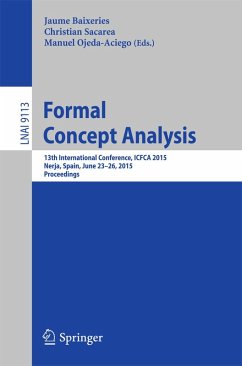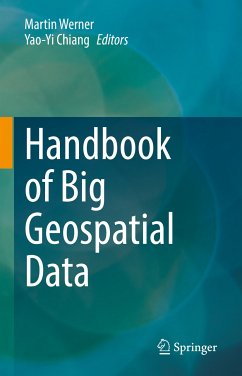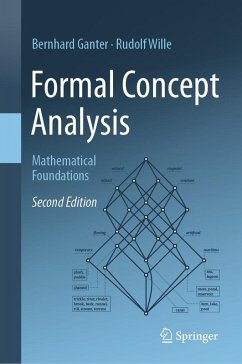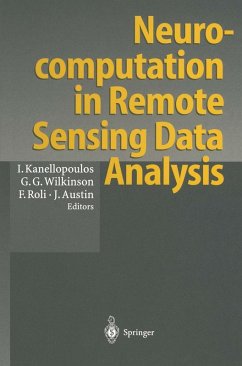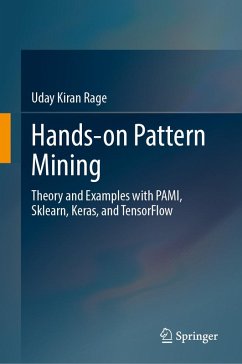
Chronicles: Formalization of a Temporal Model (eBook, PDF)
Versandkostenfrei!
Sofort per Download lieferbar
40,95 €
inkl. MwSt.
Weitere Ausgaben:

PAYBACK Punkte
20 °P sammeln!
This book is intended as an introduction to a versatile model for temporal data. It exhibits an original lattice structure on the space of chronicles and proposes new counting approach for multiple occurrences of chronicle occurrences. This book also proposes a new approach for frequent temporal pattern mining using pattern structures. This book was initiated by the work of Ch. Dousson in the 1990's. At that time, the prominent format was Temporal Constraint Networks for which the article by Richter, Meiri and Pearl is seminal.Chronicles do not conflict with temporal constraint networks, they ...
This book is intended as an introduction to a versatile model for temporal data. It exhibits an original lattice structure on the space of chronicles and proposes new counting approach for multiple occurrences of chronicle occurrences. This book also proposes a new approach for frequent temporal pattern mining using pattern structures. This book was initiated by the work of Ch. Dousson in the 1990's. At that time, the prominent format was Temporal Constraint Networks for which the article by Richter, Meiri and Pearl is seminal.
Chronicles do not conflict with temporal constraint networks, they are closely related. Not only do they share a similar graphical representation, they also have in common a notion of constraints in the timed succession of events. However, chronicles are definitely oriented towards fairly specific tasks in handling temporal data, by making explicit certain aspects of temporal data such as repetitions of an event. The notion of chronicle has been applied both for situation recognition and temporal sequence abstraction. The first challenge benefits from the simple but expressive formalism to specify temporal behavior to match in a temporal sequence. The second challenge aims to abstract a collection of sequences by chronicles with the objective to extract characteristic behaviors.
This book targets researchers and students in computer science (from logic to data science). Engineers who would like to develop algorithms based on temporal models will also find this book useful.
Chronicles do not conflict with temporal constraint networks, they are closely related. Not only do they share a similar graphical representation, they also have in common a notion of constraints in the timed succession of events. However, chronicles are definitely oriented towards fairly specific tasks in handling temporal data, by making explicit certain aspects of temporal data such as repetitions of an event. The notion of chronicle has been applied both for situation recognition and temporal sequence abstraction. The first challenge benefits from the simple but expressive formalism to specify temporal behavior to match in a temporal sequence. The second challenge aims to abstract a collection of sequences by chronicles with the objective to extract characteristic behaviors.
This book targets researchers and students in computer science (from logic to data science). Engineers who would like to develop algorithms based on temporal models will also find this book useful.
Dieser Download kann aus rechtlichen Gründen nur mit Rechnungsadresse in A, B, BG, CY, CZ, D, DK, EW, E, FIN, F, GR, HR, H, IRL, I, LT, L, LR, M, NL, PL, P, R, S, SLO, SK ausgeliefert werden.



